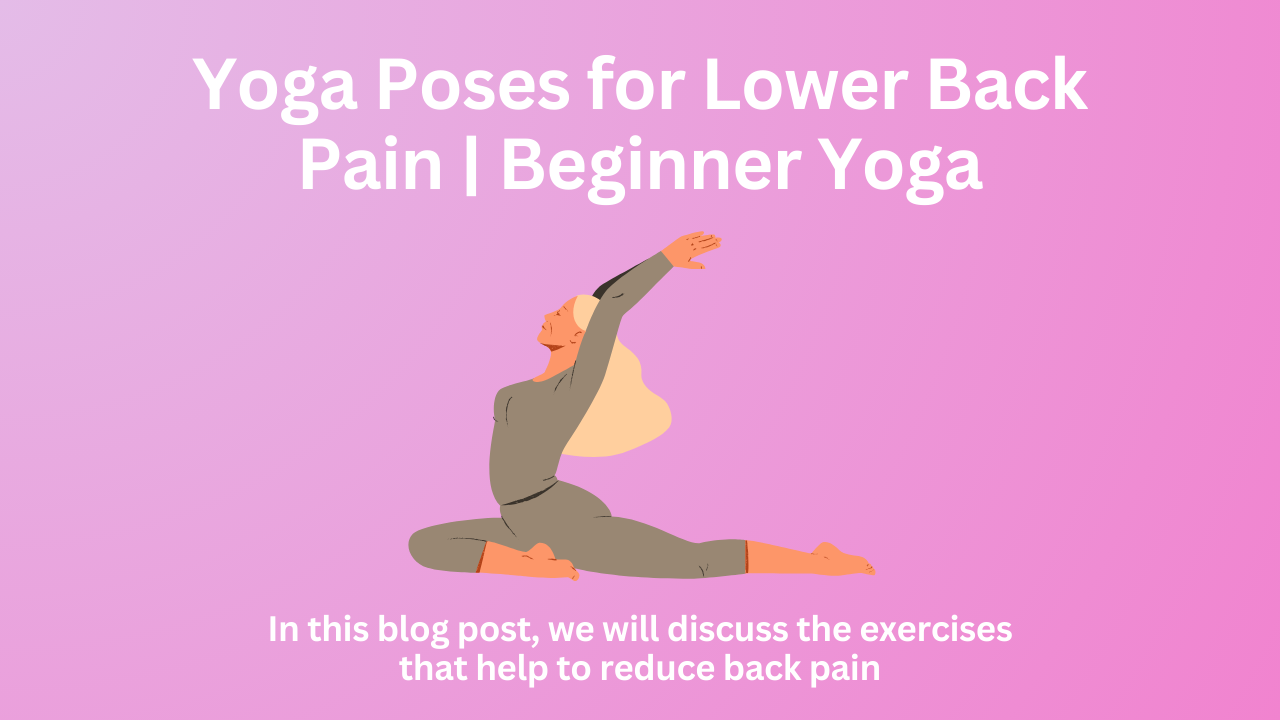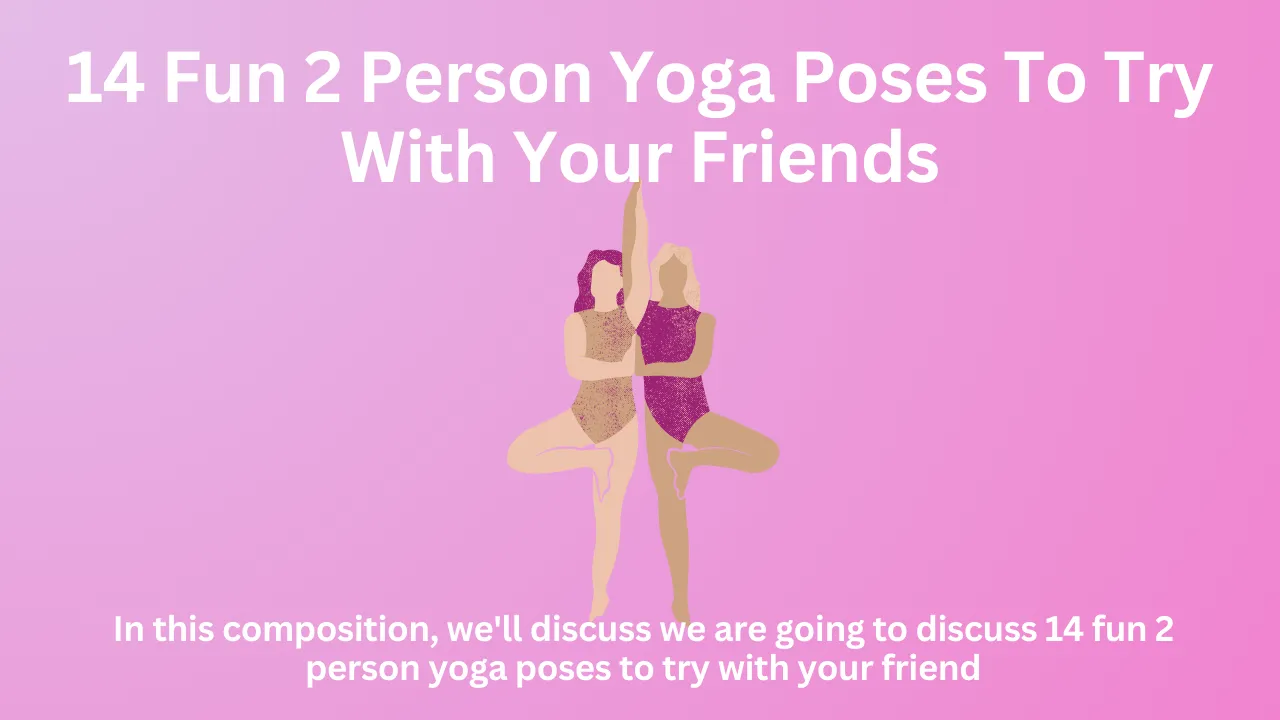Yoga Poses for Lower Back Pain | Beginner Yoga

Welcome to the yoga world. In this blog, we will discuss the exercises that help to reduce back pain. Pain in the lower back is all too prevalent. Stretching gently might be a low-effort approach to assist in releasing tension if you’re feeling tense or achy in that area. Numerous factors can contribute to your lower back pain, such as muscle strains, disc issues (the spongy pads between your vertebrae act as shock absorbers), osteoarthritis (a gradual breakdown of joint tissue), ankylosing spondylitis (an inflammatory disease that can cause your vertebrae to fuse), or axial spondyloarthritis (inflammatory arthritis in your spine).
Sitting a much is one of the most prevalent reasons, however. A full day of inactivity may weaken your core, throw off your posture, shorten your hip muscles, and put strain on your lower back. Sasha Cyrelson, DPT, OCS, the clinical director of Professional Physical Therapy in Sicklerville, New Jersey, tells SELF that all of this may put more strain on the nearby joints and obstruct your normal movement patterns, which can result in lower back pains and discomfort all around. This is when stretching is useful. It won’t make you feel better instantly, but it might provide you some comfort. What you need to know to get the most out of it is as follows.
Beneficial Exercises for Reducing Lower Back Pain
“Motion is generally lotion,” according to Dr. Cyrelson. Mild stretches help your joints to freely move through their whole range of motion while keeping your body flexible and fluid. This is crucial because, according to Dr. Cyrelson, a restricted range of motion in the spine, in particular, may put additional tension on the nearby muscles and aggravate lower back discomfort.
Furthermore, it involves more than simply doing endless lower-back stretches. Releasing tension in your legs, hips, glutes, and mid-back is also essential to maintaining pain-free living. Your posture suffers when those muscles can’t move as easily as they should. According to Dr. Cyrelson, this leads to an imbalance that puts additional strain on your lower back while you exercise or go about your regular activities. However, by maintaining that range of motion, those muscles may contract appropriately to do certain tasks, relieving pressure on the lower back muscles.
Few Things to Remember During Stretching
Stretching is generally safe to do regularly, but Dr. Cyrelson advises paying attention to how your body feels as you move. “Never bend into a painful position; pain is our bodies’ way of alerting us to a problem,” the expert advises. Stretching should provide a mixture of tension and relaxation in your muscles; if you experience any pinching, intense pain, or momentary numbness, stop.
Dr. Cyrelson advises taking additional measures if your back discomfort is associated with a persistent medical condition or if you have a history of back injuries or disc issues. To be sure you’re not doing anything that may make matters worse, first speak with your physician or physical therapist. If they give you the go-ahead to attempt a particular stretch, be careful to move slowly and deliberately so that you can stop quickly in case you experience discomfort or irritation. You should also avoid hyperextending (overarching) your lumbar spine or lower back.
Lower-Back Stretches
Start by selecting three to five stretches from the list below and doing them a few times a week. Try a few different motions until you discover the ones that feel nice if the ones you choose don’t appear to relieve any tension in your lower back.
- Get rid of any that make your back ache more or are unpleasant.
- You may eventually stretch every day (if you’d like) and gradually increase the length of time you spend in each posture as you become more at ease.
- Lastly, remember to do strength training even though we’re concentrating on stretching exercises right now.
- Developing strength in your deep abdominal muscles, pelvic floor, and glutes will also assist in maintaining the stability of your spine.
Dog Facing Downward
The back extensors, which are the big muscles that support your spine, help create your lower back, and enable you to stand and carry items, are the focus of this traditional yoga posture, which is a terrific whole-body stretch.
- With your hands slightly in front of your shoulders, begin on your hands and knees.
- Elevate your tailbone toward the sky and elevate your knees off the ground while applying pressure to your back.
- Stretch your hamstrings further by lowering your heels gradually.
- After holding the stance for five to ten breaths, hold it for another five to seven times.
Child’s Position
Child’s pose is a dynamic stretch that helps lengthen the back, even though it may seem that you are sleeping. It’s also a fantastic way to de-stress before going to bed after a demanding day.
- With your arms extended straight in front of you, begin on all fours.
- Sit back so that your glutes, or butt muscles, rest just above your heels without contacting them.
- For a nice, calming stretch, hold the pose for five to ten breaths, then repeat as many times as necessary.
Posing Pigeons
For beginners to yoga, pigeon posture might be a bit difficult, but it stretches the hip rotators and flexors. Although it may not seem like the most apparent way to relieve back pain, lower back discomfort can also be caused by tight hips.
- Place your feet together and begin in a downward-facing dog.
- Next, bend your left leg so that it is almost perpendicular to your right, and bring both of your legs down to the floor by pulling your left knee forward and to the left.
- You may either maintain your back right leg straight behind you or, for those who are experienced.
- Pigeon posers only, gently draw your back foot in nearer your back for an additional hamstring stretch.
- For five to ten breaths, hold the pose; then, move to the other side and repeat as necessary.
Triangle Position
The triangle pose may assist in lengthening the muscles along your torso while stretching the muscle fibers along your outer hip (the IT, or iliotibial band). It’s also wonderful for strengthening your legs and back.
- Step into a straight position with your feet together.
- Subsequently, extend your left foot at a 45-degree angle and lunge back three to four feet.
- With your right arm extended toward the ground and your left arm toward the ceiling, open up the posture by turning your torso to the side and maintaining a straight line with your right and left legs.
- Don’t overstretch; just bend as far as you can while keeping your back straight.
- At first, you may not be able to touch the ground with your right arm.
- For five to ten breaths, hold the pose; then, move to the other side and repeat as necessary.
Pose of the Cow and Cat
Cow and Cat stretches are ideal for relieving back pain and achy muscles. They may be used as a warm-up for other workouts or as part of a yoga regimen.
- From an all-fours posture, steadily push your spine up and arch your back to enter the cat stance.
- After a brief period of holding still, raise your head, squeeze your shoulder blades back, and scoop your spine to transition to the cow position.
- By alternating between the Cat and Cow positions, you may realign your spine, release tension from your muscles, and relax them.
- Ten times over, gracefully transition from cat to cow and back again. As necessary, repeat the order.
Moving Forward Upward flex
The upward front bend, also known as a forward fold, releases stiff, tight shoulders and extends the hamstrings and back muscles.
- Keep your feet shoulder-width apart and your knees free, not locked, as you stand upright.
- As you release the breath, slant forward from the waist and extend your arms toward the ground.
- If you can’t reach the entire floor at first, don’t panic; stop when your hamstrings feel comfortably stretched.
- Five to seven times, repeat the stance. Hold the pose for five to ten breaths on the last bend.
Dog With an Upward Gaze
This posture helps extend your abdominal muscles, activate your back, and open your chest.
- Lie down on the floor and place your hands facedown near your midribs to begin.
- Use the power of your back, not your hands, to raise your chest off the floor while bringing your knees together and planting the tips of your feet into the ground.
- First, keep your legs straight out in front of you. For five to ten breaths, hold the pose; repeat as necessary.
Dead Bug
According to Dr. Cyrelson, the dead insect develops core stability, which “supports your spine throughout everyday life.” She continues, “Just remember to maintain a rigid spine and an engaged core the entire time.” “Maintain your natural and comfortable curve; don’t let it flex or extend.”
- Assume a face-up posture, extending your arms upwards and positioning your legs in a tabletop manner, with your knees bent 90 degrees and stacked over your hips.
- This is where everything begins.
- While lowering your right arm above, slowly stretch your left leg straight out.
- Maintain both at a few inches above the floor.
- Squeeze your butt and maintain a pressed-down lower back while maintaining core activation. Return your leg and arm to their initial positions.
- Repeat with your left arm and right leg extended on the other side. That amounts to one rep.



0 Comments